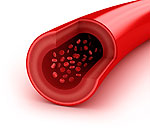 Continuing from my last article (Half the People You Know Have This Problem), here I have the next four steps that are taken in determining how to manage high cholesterol. They are important to know, as doctors use them themselves to guide a patient’s treatment. See my previous article for steps one and two.
Continuing from my last article (Half the People You Know Have This Problem), here I have the next four steps that are taken in determining how to manage high cholesterol. They are important to know, as doctors use them themselves to guide a patient’s treatment. See my previous article for steps one and two.
STEP 3: Determine the presence of major risk factors (other than high LDL levels) that will affect your LDL cholesterol count.
— Cigarette smoking
— High blood pressure
— Low HDL cholesterol — — Family history of premature heart disease
— Age (men being over 45, women over 55)
STEP 4: If you have two or more risk factors (other than high LDL levels) without coronary heart disease (CHD), they assess your 10-year (short-term) CHD risk based on the “Framingham Heart Study.” This is based on age, gender, total and HDL cholesterol, smoking history, systolic blood pressure, and whether or not you are on antihypertensive medication.
STEP 5: Determine the category of risk.
— Establish a goal for LDL therapy
— Determine your need for therapeutic lifestyle changes
— Determine the level for drug consideration
Those at higher risks of CHD must keep LDL levels below 100 mg/dL. If they cross the threshold, lifestyle changes will be necessary. If their levels rise above 130, drug therapy must be considered. For people with two or more risk factors, they must try to keep LDL levels below 130. Lifestyle changes are needed if levels rise above 130, and drugs must be considered either then or especially if levels pass 160. And for those who carry no risk factors or just one, they must keep LDL levels below 160, after which lifestyle changes are needed. Drug therapy will be considered if levels rise above 190.
STEP 6: Initiate therapeutic lifestyle changes if LDL is too high.
All of us can influence our cholesterol count simply through lifestyle choices. For the diet, this means limiting saturated fat to less than seven percent of total calories per day. It means limiting cholesterol intake to below 200 milligrams a day. It means considering increasing soluble fiber in your diet to between 10 and 25 grams a day, and plant stanols/sterols to two grams a day as therapeutic options to help drop levels. The other two lifestyle changes should always be in play: weight management and increased physical activity.
Sources:
The Next Four Steps to Lowering High Cholesterol
U.S. Department of Health and Human Services, Public
Health Service, National Institutes of Health, National
Heart, Lung and Blood Institute, “National Cholesterol
Education Program: Third Report of the National
Cholesterol Education Program (NCEP) Expert Panel on
Detection, Evaluation, and Treatment of High Blood
Cholesterol in Adults (Adult Treatment Panel III),”
Bethesda, MD: 2002.
